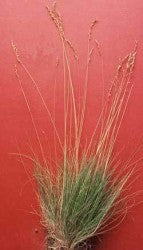Fescue culture: How sustainable is it?
 Fescue culture: How sustainable is it?
Fescue culture: How sustainable is it?
By Martyn Jones : National Turfgrass Foundation
Whilst many golf course managers and head greenkeepers might relish the thought of being able to maintain high quality fescue greens, few can actually boast that they have more than a relatively small percentage presence of the species in their greens. Indeed, all the courses with more than 30% fescue content probably represent less than 0.5% of the Worlds golf courses. In stark contrast, courses with more than 30% annual meadowgrass probably amount to 70% or more of all courses.
Additionally, no major tournament is played on pure fescue greens. More significantly, no major tournament is played on greens with 50% or more fescue content.
These statistics, therefore, pose the question of how sustainable is fescue culture? Only a few years ago, the hype was centred on increasing the bent content of greens. Now, suddenly, fescue seems to be the latest fad!
Is fescue culture, then, a pipe dream? Is it an achievable goal? What research supports the hypothesis?
Do you have strong views or are you curious to learn more? Express your views at the National Turfgrass Foundation 'In Pursuit of Excellence' Conference at the Hilton Hotel, Blackpool, 5th to 8th December 2005. For further details, contact NTFoundation@aol.com or speak to Martyn or Louise on 01995 670675 or 07887578807.
